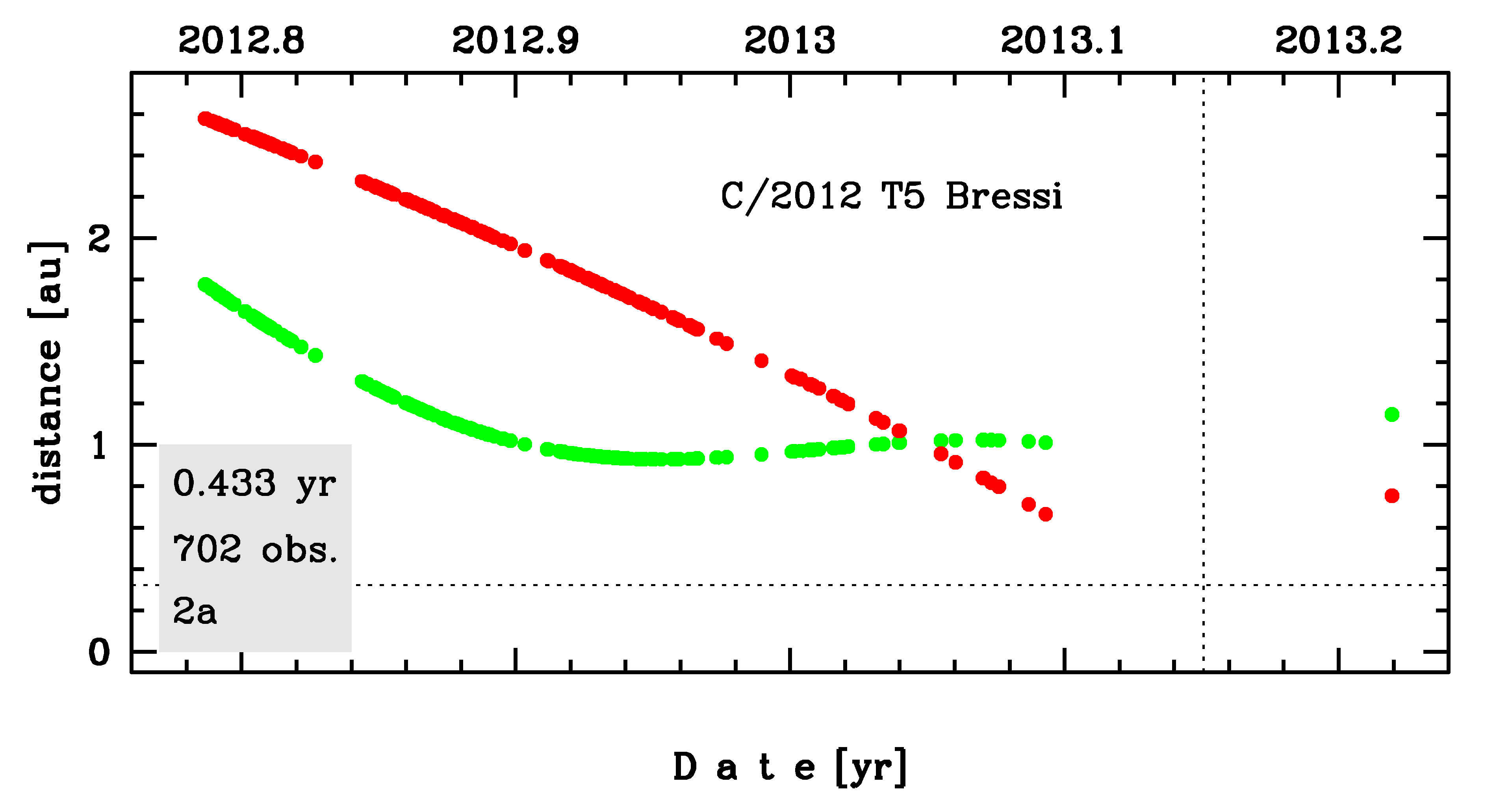C/2012 T5 Bressi
more info
Comet C/2012 T5 was discovered on 14 October 2012 by Terry H. Bressi (Spacewatch), that is more than 4 months before its perihelion passage. It was observed until 21 March 2013 (see picture).
C/2012 T5 had its closest approach to the Earth on 25 February 2013 (0.913 au), a day after its perihelion passage.
Comet was lost a month after perihelion passage and Sekanina (2019) concluded that this Oort Cloud comet did not survive the observed perihelion passage.
Original value of 1/a is significantly negative for solutions based on entire data set. The preferred solution (based on pre-perihelion data taken at larger heliocentric distances than 1.33au) gives also negative value of original 1/a; however, within its uncertainty of about 1.5 sigma this comet can came from the Oort Cloud.
See also Królikowska 2020.
C/2012 T5 had its closest approach to the Earth on 25 February 2013 (0.913 au), a day after its perihelion passage.
Comet was lost a month after perihelion passage and Sekanina (2019) concluded that this Oort Cloud comet did not survive the observed perihelion passage.
Original value of 1/a is significantly negative for solutions based on entire data set. The preferred solution (based on pre-perihelion data taken at larger heliocentric distances than 1.33au) gives also negative value of original 1/a; however, within its uncertainty of about 1.5 sigma this comet can came from the Oort Cloud.
See also Królikowska 2020.
| solution description | ||
|---|---|---|
| number of observations | 702 | |
| data interval | 2012 10 14 – 2013 03 21 | |
| data type | significantly more measurements before perihelion (PRE+) | |
| data arc selection | entire data set (STD) | |
| range of heliocentric distances | 2.58 au – 0.32 au (perihelion) – 0.75 au | |
| type of model of motion | NT - non-gravitational orbits for asymmetric, standard g(r) | |
| data weighting | YES | |
| number of residuals | 1398 | |
| RMS [arcseconds] | 0.72 | |
| orbit quality class | 2a | |
| orbital elements (barycentric ecliptic J2000) | ||
|---|---|---|
| Epoch | 1717 12 06 | |
| perihelion date | 2013 02 23.06900328 | ± 0.00034405 |
| perihelion distance [au] | 0.31309582 | ± 0.00000473 |
| eccentricity | 1.00004954 | ± 0.00000742 |
| argument of perihelion [°] | 318.564233 | ± 0.000954 |
| ascending node [°] | 230.639794 | ± 0.000386 |
| inclination [°] | 72.035738 | ± 0.001329 |
| reciprocal semi-major axis [10-6 au-1] | -158.21 | ± 23.70 |
| file containing 5001 VCs swarm |
|---|
| 2012t5n6.bmi |

